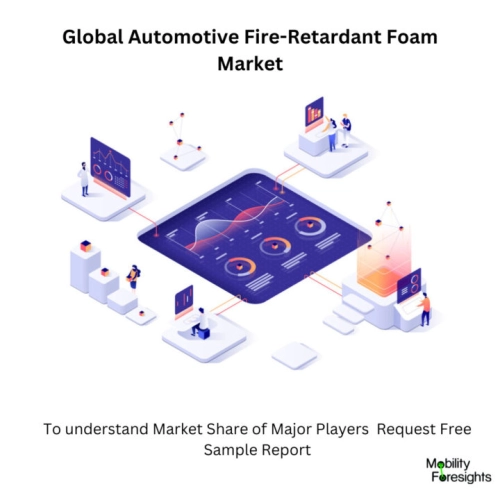
- Get in Touch with Us

Last Updated: Apr 25, 2025 | Study Period: 2023-2030
A kind of foam substance made to put out fires in cars is called automotive fire-retardant foam. It is often created from a mix of chemicals that work together to put out fires and stop them from spreading.
The foam can be sprayed over the fire when it starts in a car, where it swiftly spreads to smother the flames and cool the surrounding area. Also, as the fire's fuel source is broken down by the chemicals released by the foam, the flames are further doused.
In racing and other high-performance cars where there is a higher risk of fire, automotive fire-retardant foam is frequently employed. Also, it functions as a safety element in some consumer vehicles.
While fire-retardant foam can be successful at putting out fires, it should be noted that these measures should not be used in place of appropriate fire prevention and safety.
Drivers should always adhere to the recommended safety procedures and take precautions to reduce the likelihood of car fires.

Global automotive fire-retardant foam market accounted for $XX Billion in 2022 and is anticipated to reach $XX Billion by 2030, registering a CAGR of XX% from 2023 to 2030.
The first particle foam based on polyethersulfone, which was developed by BASF, is currently available in prototype form (PESU).
The foam is distinguished by a special combination of attributes, including intrinsic flame resistance, high temperature resistance, and a very low weight while maintaining high stiffness and strength.
As a result, it is especially well suited for complex-shaped parts in vehicles like cars, planes, and trains that need to have outstanding mechanical qualities as well as be able to tolerate high operating temperatures or adhere to strict flame-retardant standards.
Using currently available technologies, the expandable PESU granulate is pre-foamed into beads with low densities between 40 and 120 g/L, which may then be processed into moulded parts with intricate 3D geometries.
An amorphous thermoplastic with an unusual temperature profile, Ultrason E, the PESU of BASF, has a high glass transition temperature of 225°C while maintaining dimensional stability.
Its exceptional mechanical and dielectric characteristics are also just marginally temperature-dependent. The use of Ultrason E foam in aeroplanes is authorised.
The material stands out due to its exceptionally high limiting oxygen index of 38 (per ASTM D 2863), which indicates that it is intrinsically flame retardant. It also satisfies the requirements for commercial aircraft in terms of combustibility, low heat release, and low smoke density.
THIS REPORT WILL ANSWER FOLLOWING QUESTIONS
| Sl no | Topic |
| 1 | Market Segmentation |
| 2 | Scope of the report |
| 3 | Abbreviations |
| 4 | Research Methodology |
| 5 | Executive Summary |
| 6 | Introduction |
| 7 | Insights from Industry stakeholders |
| 8 | Cost breakdown of Product by sub-components and average profit margin |
| 9 | Disruptive innovation in the Industry |
| 10 | Technology trends in the Industry |
| 11 | Consumer trends in the industry |
| 12 | Recent Production Milestones |
| 13 | Component Manufacturing in US, EU and China |
| 14 | COVID-19 impact on overall market |
| 15 | COVID-19 impact on Production of components |
| 16 | COVID-19 impact on Point of sale |
| 17 | Market Segmentation, Dynamics and Forecast by Geography, 2023-2030 |
| 18 | Market Segmentation, Dynamics and Forecast by Product Type, 2023-2030 |
| 19 | Market Segmentation, Dynamics and Forecast by Application, 2023-2030 |
| 20 | Market Segmentation, Dynamics and Forecast by End use, 2023-2030 |
| 21 | Product installation rate by OEM, 2023 |
| 22 | Incline/Decline in Average B-2-B selling price in past 5 years |
| 23 | Competition from substitute products |
| 24 | Gross margin and average profitability of suppliers |
| 25 | New product development in past 12 months |
| 26 | M&A in past 12 months |
| 27 | Growth strategy of leading players |
| 28 | Market share of vendors, 2023 |
| 29 | Company Profiles |
| 30 | Unmet needs and opportunity for new suppliers |
| 31 | Conclusion |
| 32 | Appendix |